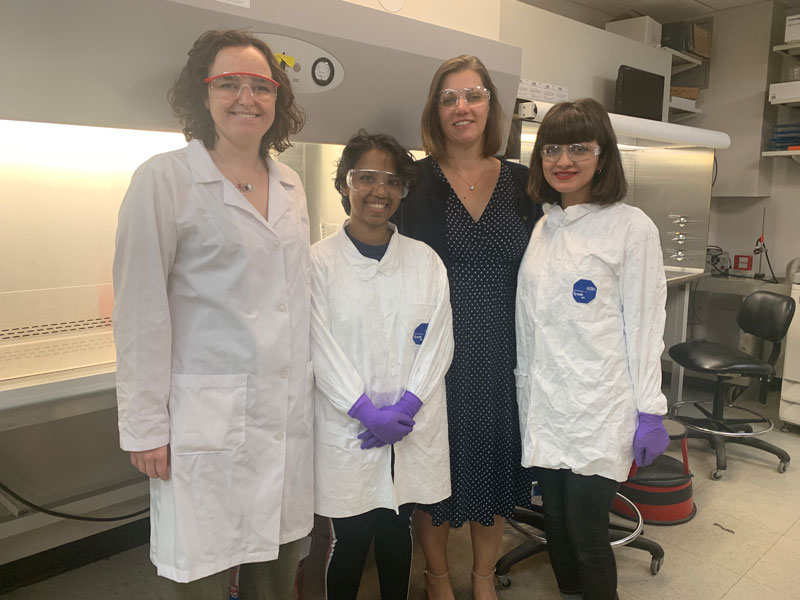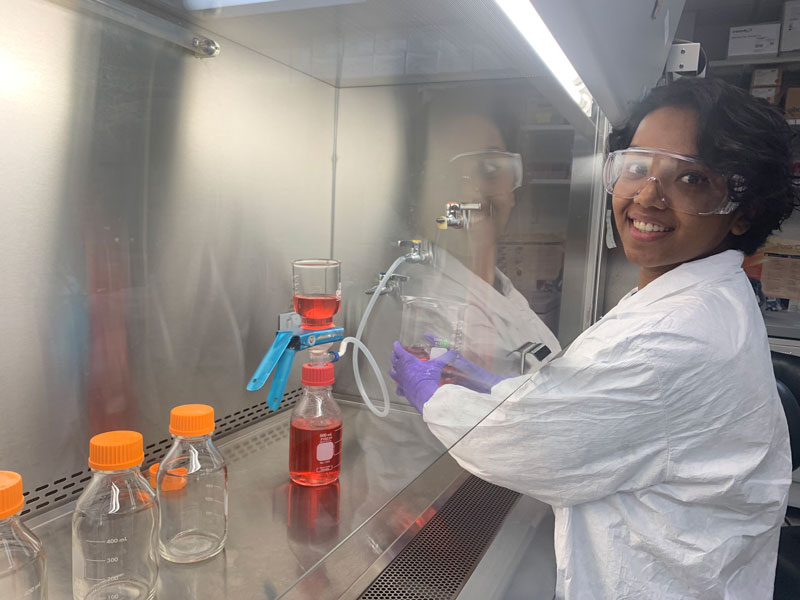It is common knowledge that the scientific community has developed an understanding of the restorative, regenerative benefits of stem cells. But – not all stem cells are created equal.
Recently, Dr. Rebecca Willits, Interim Chairperson of the Biomedical Engineering Department and Margaret F. Donovan Endowed Chair for Women in Engineering, was awarded a $414,032 grant from the National Science Foundation to study how changes that occur in the niche of stem cells influence their behavior. The niche, where stem cells live in the brain, acts like a parent to a child, providing a nurturing environment for the cells to thrive. When the time is right, the niche provides signals for the stem cells to move out and support the surrounding community. However, with disease or with aging, stem cells do not have the same survival or supportive response.

Members of Dr. Willits’ lab include McKay Cavanaugh, Diana Philip, Dr. Willits, and Narges Yazdani.
Dr. Willits’s work will help the scientific community understand how changes that occur in the niche lead to cells appearing younger or older, so they can then go back and look at how to modify the niche in a human to get to a desirable response and release healthy stem cells into the body. The changes that make-up a “bad” niche are, quite possibly, reversible.
Dr. Willits and her lab, consisting of both undergraduate and graduate students, are only looking at one small piece of a huge cellular environment and their impact on the niche - the cellular interaction between stem cells and the surrounding environment.

Diana Philip, biomedical engineering graduate student, is preparing media, or food, to grow and sustain the cells.
"Science has shown that when you inject young stem cells into an old brain, the young cells ‘act’ old,” says Dr. Willits. Unfortunately the solution to harnessing stem cell benefits is not as easy as injecting healthy stem cells into an old brain. The problem lies within the niche. What about the niche contributes to otherwise healthy stem cells acting, well, off? That is the million-dollar question this team of engineers is trying to solve.
The potential impact of these learnings will help scientists understand what components make a healthy brain.
"It is a nature versus nurture question," says Dr. Willits. "What nurturing environment is necessary for stem cells to survive and respond? We hope to figure that out."
Congratulations to Dr. Willits and her team!
